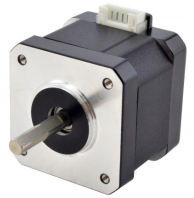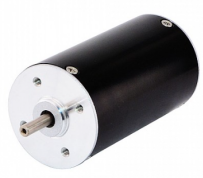The correct matching of motor andreducer is one of the key factors to achieve normal operation and performance optimization of mechanical systems. Improper matching can lead to inefficiency, overload, malfunction and other problems. The following are some considerations for correctly matching motors and reducers:
1. Determine the required performance: First, it is necessary to clarify the performance parameters required by the mechanical system, such as output torque, speed range, working cycle, accuracy, etc. These parameters will help you choose the appropriate motor and reducer.
2. Calculate load parameters: Calculate the load parameters of the mechanical system, including the torque and speed requirements of the working load. Understand the load changes of the system under different working conditions in order to select the appropriate motor and reducer.
3. Select the motor: Select the appropriate motor according to the load parameters and required performance. The motor's rated power, rated speed, torque-speed curve, etc. are key indicators for selection. Make sure that the selected motor can meet the load requirements and has a certain margin to cope with temporary load changes.

4. Select the reducer: Once the motor is determined, the next step is to select the reducer. The function of the reducer is to reduce the output speed of the motor and increase the torque. Select the appropriate reduction ratio based on the required output speed and torque. The efficiency, torque transfer capabilities and stability of the reducer also need to be considered. The following aspects need to be considered:
4.1. Power matching of motor and reducer
The power matching between the motor and the reducer is a very important aspect. Since the output power of the motor and the input power of the reducer are different, it is necessary to make a reasonable match according to actual needs to ensure that the working status of the motor and reducer is smooth and stable.
4.2. Matching of the rated load of the reducer and the actual load
The matching of the motor and the reducer also needs to consider the matching between the rated load and the actual load of the reducer. If the load of the reducer is too large, it will easily lead to system failure, and if the load of the reducer is too small, it will affect the operating efficiency and performance of the entire system.
4.3. The speed of the motor and reducer must match
The speed of the motor and reducer is a very important aspect. If the speed does not match, it will cause the motor or reducer to be overloaded, and will also cause the entire system to work inefficiently.
4.4. Match the working environment of the motor and reducer
The working environment of the motor and reducer also needs to be matched. For example, in environments with high temperatures, humidity, and strong corrosiveness, it is necessary to use anti-corrosion, heat-resistant, and corrosion-resistant motors and reducers to ensure the stability and reliability of the working environment.
5. Match the appropriate type: Select the appropriate motor and reducer type according to the actual application requirements. There are DC motors, AC motors, stepper motors,Brushless DC Motors, etc., as well as different types of reducers, such as gear reducers, planetary reducers, etc. Different types of combinations will affect the efficiency, accuracy and performance of the system.

6. Consider efficiency and effectiveness: When matching motors and reducers, the efficiency of the system must be considered. An efficient motor and reducer combination reduces energy consumption and improves system performance. In addition, the efficiency of the mechanical system must also be considered, that is, the ratio of output power to input power.
7. Vibration and noise: When matching the motor and reducer, the vibration and noise of the mechanical system also need to be considered. Improper matching may cause mechanical vibration and noise problems, affecting system stability and reliability.
In short, the correct matching of motors and reducers requires comprehensive consideration of the performance requirements, load parameters, working environment and other factors of the mechanical system. This ensures that the mechanical system operates efficiently, stably, and meets design and work requirements. It is best to select and match motors and reducers under the guidance of professional engineers.
Discussions
Become a Hackaday.io Member
Create an account to leave a comment. Already have an account? Log In.